Last month, I wrote an article which cell phone carrier is the best for travel, and there were a lot of emphatic responses. However, one common question readers asked was, why didn’t I compare Google’s Project Fi as an option? Since T-Mobile was the winner against the other 3 leading cell phone carriers, I decided to put T-mobile up against Project Fi. Let’s see how they match up.
- Which cell phone carrier is the best for travel?
- T-Mobile One vs Project Fi – Which one is better for travel?
- How to sign up for Google Fi mobile phone service
Cellphone Plan
Project Fi
Your cell phone bill doesn’t get much simpler than Project Fi’s plan. Your monthly plan is only $20 per month with unlimited domestic talk and text, unlimited international texts and coverage in more than 135 countries. Although, Google Fi doesn’t provide unlimited data, their $10 per GB is fairly priced for anyone’s budget.

T-Mobile
T-Mobile recently launched their new T-Mobile ONE plan to their customers. The new monthly bill would be $70 by selecting the T-Mobile ONE plan. You can save an additional $5 off your monthly statement by enrolling in auto-payment. The plan includes unlimited talk, text, and 4G LTE data. A big bonus is customers can enjoy unlimited text and one hour of complimentary WiFi via Gogo in-flight internet.
Click here for the best T-Mobile phones under $100.
Pro Tip: If you have multiple phone lines on your account, you get one hour for each line. And wi-Fi mobile hotspots count as an additional line. Most importantly, you can use those free hours on a single device! I have 4 phones and 2 hotspots on my plan, so that’s 6 hours of free wifi. – Lee
Reduce your data usage
Whether you’re on Google Fi or using the included T-Mobile data, you want to reduce your data usage when traveling internationally because you’ll often be surfing on 3G or 4G speeds instead of the LTE networks we’re used to in the United States.
The cost of the data is one thing, but how slow your phone becomes because it is trying to download so much data over a slow network is the real issue.
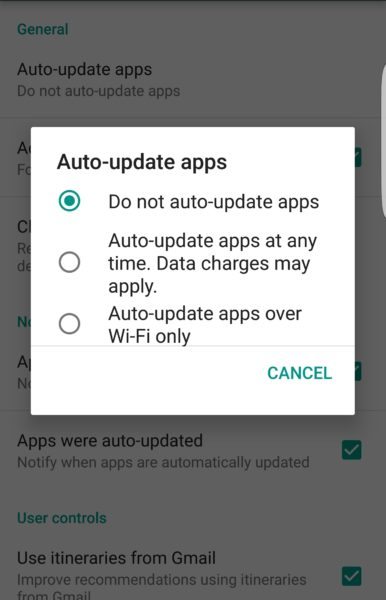
Pro Tip: When you’re traveling overseas, make sure to turn off your app updates. Even when you set on download over Wi-Fi only, it can take several minutes per app download and slow your phone with all the updates needed. If you’re in a hurry and just want to check back home with love ones or friends, the slowdown can be a nuisance. By turning off app updates, you save any data from being accumulated towards your data plan limit.
Phone Availability
When choosing Project Fi phones, you’re restricted to use only Google’s Nexus 6P, Nexus 5X or Nexus 6. For Android users, these smartphones have the latest features and supported apps that one is commonly used to. However, if you’re an Apple fan, you might be reluctant to switch over.
On the other hand, T-mobile offers an array of supported smartphones with their plans. You can get the latest Samsung, Apple or LG phones with them. In fact, a few months ago when the Samsung S7 and S7 Edge were released, T-Mobile offered a promotion for a free Samsung Gear VR and a year subscription to Netflix with a purchase of any Samsung S7 or S7 Edge. And the latest release from Apple will be announced on Wednesday, September 7.
Power Bank
When traveling, make sure to always carry a power bank in your purse or backpack. The last thing you want is to find all the wall outlets being used at a coffee shop or airport. Click here to use our referral link to see our recommend power bank charger.
The reason why I like this power bank is because it features the Qualcomm Quick Charge 3.0. What that means is that you’re able to charge your phone’s battery up to 80% in 35 minutes. It’s compatible with iPhone’s and Android phones.
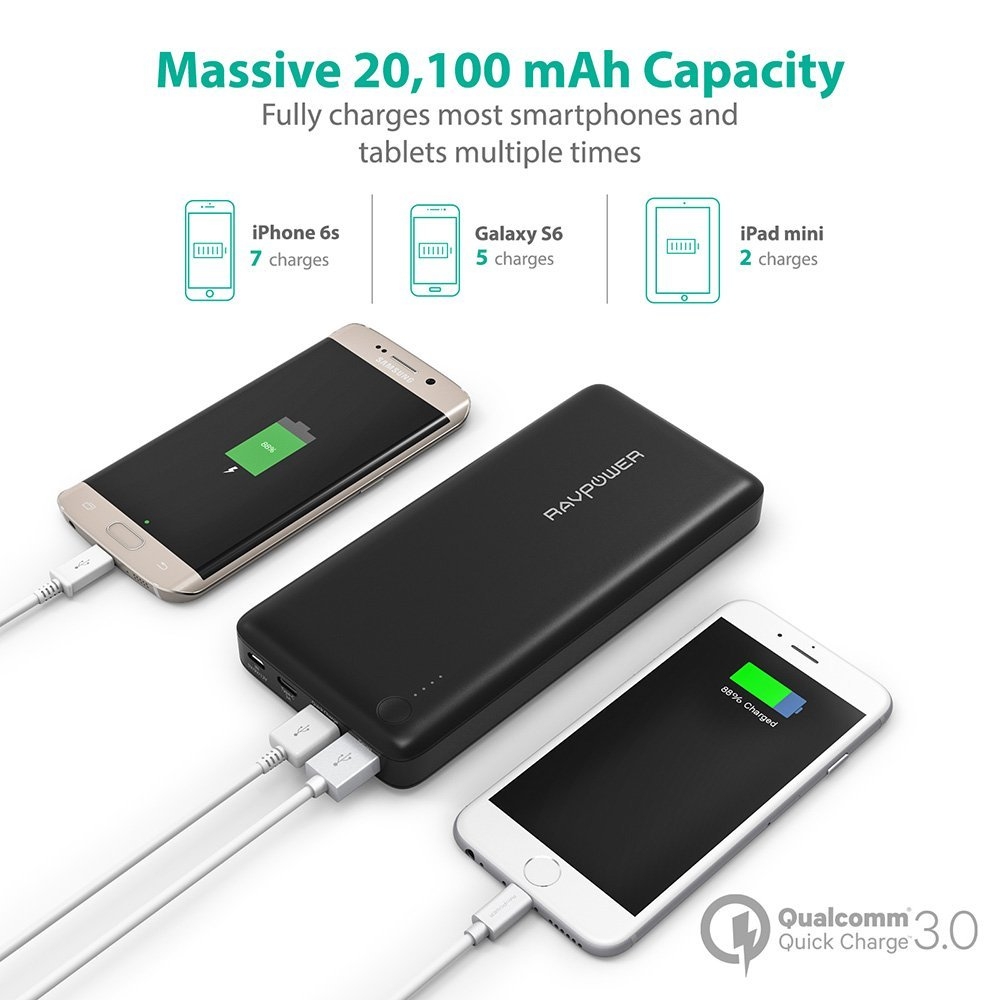
How to pay for your cell phone bill
When paying for your cell phone bill, you want to enroll in auto-pay with your credit card to maximize the points you earn… and to make sure you don’t get a late fee while traveling. The card I use is Chase Ink Plus because you earn 5x points for every dollar you spend with cell phone and internet providers. Those Ultimate Rewards points are very valuable when redeeming for travel, or when transferring to your favorite miles and points programs, like Southwest, United, British Airways, Hyatt, and Marriott. If you’re interested in getting the Chase Ink Plus, we appreciate your support of BaldThoughts by using our referral link.
Rewards Credit Cards
- Earn rewards with your everyday spend, and get a little closer to your next vacation.
- Use rewards to book hotels, air travel, gift cards, or to cover travel expenses like Uber.
- Loyalty pays off — earn double rewards when you use your card to book a trip with your favorite hotel or airline.
- Enjoy additional travel perks like travel insurance, waived foreign transaction fees, and airport lounge access.
- Terms vary by partner offer. Please see each bank’s application for terms and conditions.
The Bald Thoughts
I rule this match-up a tie since both providers offer similar plans, but the plan that works best for you depends what type of person you are. For example, I looked at my data plan on T-mobile I used the last 3 months. 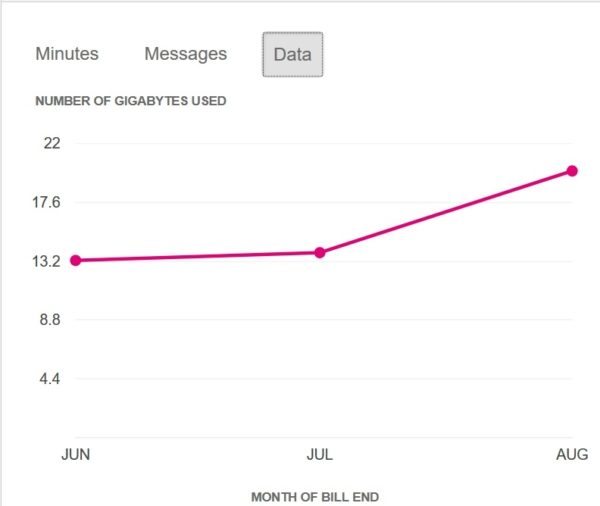
In June, July and August I used 13.26, 13.86 and 19.95 GB of data. If I was on Project Fi’s plan I would have paid $10 per GB used atop of the $20 monthly bill. As a result, my cell phone bill would have been $150, $160, and $220 on Project Fi compared to my monthly bill of $70 on T-Mobile’s ONE plan, which includes unlimited 4G LTE data. To achieve the same monthly price on T-mobile, a subscriber on Project Fi would have a limit of 5GB per month to use before they would be charged more than $70.
If you’re the type of person who primarily uses wifi and would likely not use more than 5GB of data per month, then I would highly recommend Project Fi. In contrast, if you’re someone like me which uses a lot of data, then T-Mobile is the best option for you.

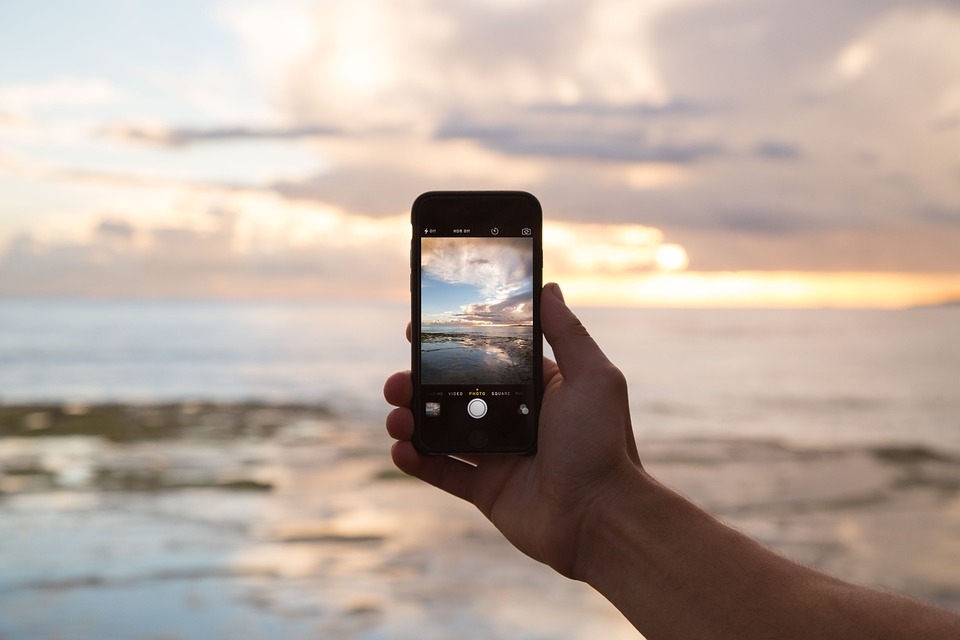
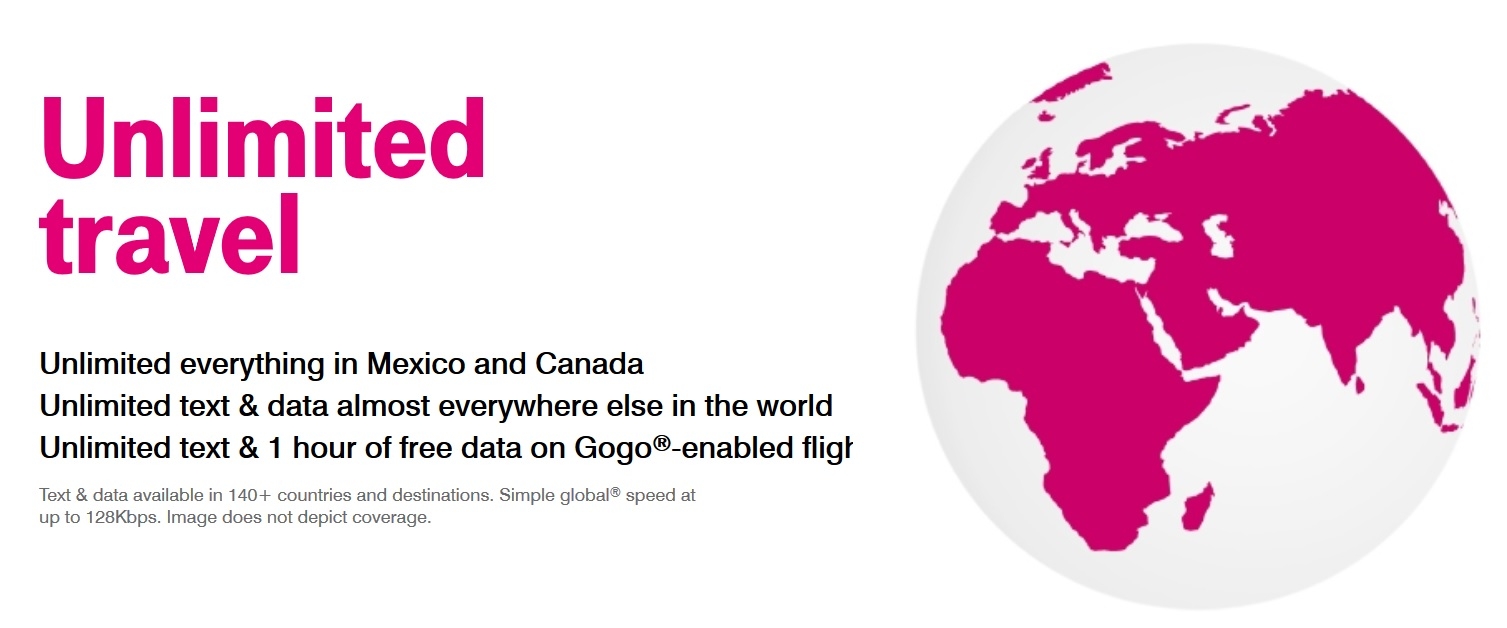



Since many people have multiple lines on their plan (I have 4), there also needs to be a comparison for that case. How much does the price differ between a T-Mobile 4 line plan ($140 or so for 4 x 10GB per month not including streaming) and a Project Fi 4 line plan?
Mark, you make a good point. We’ll look into publishing a post like that.
I’m also not sure how to account for the fact that T-Mobile doesn’t count most streaming in their data caps. 3 out of 4 of the phones on my plan use video streaming (netflix, amazon prime, etc) quite often.
Great point Mark. It seems that mobile carriers are trying to complicate their packages in such a way to make it difficult to compare apples-to-apples against the competition.
Project Fi is about simplicity, not low cost. T-Mobile is the opposite. On T-Mobile, all sorts of different buckets of data count differently and you have to keep track of them all. Project Fi tracks one thing and one thing only: quantity of data used. There isn’t even a per-device fee on Project Fi! Data-only SIM cards are free!
One thing overlooked with Project Fi is you will only be billed for what data you actually use. Fi does not jump from tier to tier with data. For example my domestic data use in August was 0.5 gig. 5 bucks. My total bill was $25 and I stream all day at work. $25.00. Somebody’s gonna get fired. 🙂
Great point Steven. That’s nice that the billing is linear instead of paying for each bucket. It’s only $10, but I’d be frustrated if a few Kb pushed me over the edge into a new bucket on a regular basis.
You don’t get billed in full ten dollar increments though. You would only pay another penny or two for a few KBs. Plus project fi does a great job of using Wi-Fi you didn’t even know was available which can save a ton of data
More great benefits of Fi. Phone companies seem to be intentionally fostering difficulty in comparing plans so most people will just give up and stay with what they know.
I was with project fi before switching to Tmobile family plan. I used to pay 35$ all inclusive/month for 1GB data but after switching to tmobile (4 line for 120$) I am getting 6GB data + unlimited streaming for the same amount.
My plan is similar Eddy. We have 3 data plans and my Mom has a basic phone on the 4th line. I believe we have 10GB a month instead of 6GB though. And then we have two hotspots. After paying the monthly on the phone purchases and after discounts, our bill is around $250-275 for everything.
What about signal and connectivity. While I agree T-Mobile might be a little cheaper on the monthly (if your a heavy user) I just returned from the UAE and QAtar and had a flawless signal the whole time on project fi. I noticed it was switching carriers sometimes on the process. That being said two weeks back I was using my project fi in Jamaica and in the resort the signal was horrible to almost non existent. Once I was out of the resort I had a perfect signal. A week before that I was in nags head in the North Carolina outerbanks and both my project fi and my wife’s T-Mobile phone couldn’t get a signal in our apartment. So there it wasn’t a benefit either way. I was thinking since project fi tends to use more carriers would that actually make it more useful?
The ability to switch among carriers is certainly a benefit that puts Fi ahead of the competition in that category. In some areas, you’re going to have trouble no matter what given the coverage maps.
I switched from T-Mobile to Project Fi. I’ve only had a chance to use Project Fi in Japan, but it’s better than T-Mobile for a couple of reasons:
1. Project Fi’s data speeds are faster. T-Mobile offers 2G internationally, but on Project Fi, whatever the carrier offers is what you get.
2. With Project Fi you can use your phone as a hotspot. That’s a great convenience when traveling internationally.
3. Project Fi lets you have a second, data-only SIM, which is handy if you’re traveling with somebody or carry a tablet with a SIM card slot.
Jay, you make some very good points about data speeds and other benefits, like being a hotspot and the 2nd line.
Project fi uses Tmobile roaming agreement with the international operators, therefore your line abroad acts like a tmobile sim card. The data speed is the same between tmobile and project fi abroad, except some European countries where project fi has an agreement with Three Telecom
I personally know that’s not true, while I was on T-Mobile, the speed I got while in China is definitely only 2g, but with project Fi, I got at least 3g, sometimes 4g speed
Also i wonder how much of the cell data you used would have been cut out when using Project X since it switches to Wi-Fi hotspots every time they are available? You probably wouldn’t have used 13+ gig if your phone was switching to Wi-Fi whenever possible. Trying to make sure I understand… ????
Switching to wifi would certainly cut down on data usage. The problem with open wifi is security. You’ll want to use a VPN app to secure your phone when browsing on public wifi to secure your data.
If enabled, Project fi will create a VPN automatically when it connects to open/trusted wifi.
Fi automatically sets up and uses a Google VPN whenever it auto-connects to an open wireless network. (You don’t need Project Fi for this capability — all Fi-supported Nexus hardware models now support this feature, no matter what carrier you use.)
Actually, project Fi phones use their own vpn to encrypt your connection to any Wi-Fi. I have a 2GB plan with them and after a month I’ve used nearly 20gb via Wi-Fi and less than 500mb via cellular data thanks to it’s auto switching.
That’s fantastic! My data at T-Mobile continues to carry over since I rarely use my full 10GB
Google Fi provides VPN when auto-connecting to public WiFi services.
Thanks Dusty… hopefully Apple will offer this in a future upgrade since I really like my iPhone.
How do you use 20 gigs of data? I barely use 1 a month. What are you doing that requires so much?
I’ll have to ask Charlie. My normal usage is between 5 GB and 10 GB a month. T-Mobile lets you roll over unused data, but I have rarely ever dipped into that carryover.
T-Mobile gives limited 3g or 4g speeds when abroad..
Project Fi gives full LTE on Nexus 6p at-least in Singapore and Malaysia.
That’s great to know about Google Fi. Each country and network has so many nuances, I think the decision of which network is better is determined market by market.
Something international travelers may want to know is Project Fi often gives users 4G and sometimes LTE data speeds (at $10 per GB); T-Mobile One gives unlimited data at 2G speeds (128K downloads) and for $25 extra gives 3G speeds (256K downloads) with One Plus.
Fi has built in vpn
That’s good to know. I use an iPhone and have to use a separate app for VPN.
It says right in your T-Mobile image that international data speeds on T-Mobile are limited to “128 Kbps”. Project Fi’s international speeds are much higher, 8 Mbps and up. That’s a huge difference! I use Project Fi everywhere in the world and love it.
You’re right DJ, that is a HUGE difference in speed. Lack of LTE connectivity is a major negative against T-Mobile.
A few additional thoughts about Project Fi:
1) Project Fi has 4 carriers for backend and switches between them as needed (T-Mobile, Sprint, US Cellular and Three in the UK).
2) Project Fi is LTE internationally (T-Mobile is throttled).
3) Project Fi offers up to 9 free “data only” sims for secondary devices. So, you have an LTE laptop and an LTE smartwatch? You only pay for the data you use on those devices.
Great additions Wendell! You guys are really making the case for Fi.
For travel, if think coverage would be a concern that was mentioned.
Google Fi should have the advantage here, since it’s an MNVO that uses T-Mobile, Sprint, US Cellular towers, plus encrypted wifi in absence of those.
T Mobile coverage I’m sure is great these days all by itself, but for a traveler, the more towers you can connect to, the better.
Also, in terms of roaming, I’d think T Mobile would be less evil than say, Verizon, in terms of outrageous fees, but it would be worth comparing Google Fi’s “none for data, per-minute for voice” to T Mobile.
When I was in Montana earlier this year visiting the National Parks, I was roaming and reached my monthly limit with T-Mobile, so that’s a definite disadvantage to their service. I made the switch from AT&T a year ago and saved big time, although the coverage isn’t as good.
Project Fi will only switch to an open wifi network if it meets Google qualifying criteria and then using the Wifi Assistant’s built-in VPN.
That’s a very valid point Mike! If there’s no wifi, say when you’re driving and using GPS, it could get very costly using Fi. Especially if you don’t turn off many of your automatic services, like email downloads, updates, and all the other apps that work in the background.
This article seems quite biased to T-Mobile. Tiny little sinp-it about Project-fi, the rest of the article basicly all about T-MOBILE. XD
Rich, we’re looking into getting a Google Fi phone so we can test it on upcoming trips to Asia, Sweden, Mexico, and Italy. I think any bias you may see is based on the majority of our actual experience being with T-Mobile, while Fi knowledge is from reading about the offering. There are many great tidbits of info related to Fi in the post below.
You should spend more time researching the technical differences before posting. This article spend more time trying to push credit card referrals than what makes Google Fi better than T-Mobile and misses assume very important differentiators.
Keith, we created this comparison based on reader’s requests. At the time, we didn’t have a Google Fi phone to compare with, but wanted to get the information out to foster a discussion and receive tips from readers based on their own experiences, which this obviously has.
Based on our research and all of the valuable information from the readers, we’ve ordered a Google Fi phone and will share our experience using it vs our existing phone service (mine is T-Mobile) on our travels. Charlie will be traveling to Asia for work, and I have upcoming trips to Italy, Cabo, and Sweden. We look forward to seeing how Google Fi performs ourselves so that we can provide a firsthand account.
Lee, I think you will be pleasantly surprised with Fi
Fascinating comparison. I love being on Project Fi and just returned from a trip around China where I was able to use my phone and data without any issues. I also loved that something wonderful deep inside my Project Fi phone allowed me to use Facebook and such from behind the iron firewall of China. I think everybody is going to be different, but I really tried to disconnect while traveling, so that may have been helpful.
Rob, thanks for sharing your experience. That’s great that Google is able to bypass the Chinese firewalls so you could access content like Facebook. Yes, FB is a total time suck and productivity killer, but it’s also a valuable tool for sharing info and staying in touch with family…something we often take for granted.
I was just chatting about T-Mobile with a friend of mine saying I needed to check it out for my next big trip. Now I’ve got even more to think about. I would likely still go with T-Mobile based on your arguments but the FI plan is worth considering.
I hear you Carlie, as great as the service sounds, I’m not ready to give up my iPhone. I ordered a Fi phone to try it out and compare. Worst case, while abroad I’ll use it as a hotspot for the faster internet and security.
Phone connectivity and a good data plan is a vital necessity while traveling today. You have provided some really viable solutions here.
Thanks! We’re looking forward to putting the phone through some serious testing as we travel to Asia, Italy, Mexico, and Sweden the next few months.